
Systems and components for industrial enclosures including fan filters, frame fans, heaters, cooling units, regulators, lights, and signal devices.


Air filtered solutions for electrical cabinets.

Air moving solutions for temperature-sensitive applications.

Heating resistors to prevent condensation.

Thermoelectric air conditioners for enclosure cooling.

Temperature and humidity controllers and detection devices.

Lighting systems for spot illumination inside the enclosure.

Signaling indicators for industrial automated processes.
Increasingly often, the causes behind malfunctions or faults in electrical and electronic equipment housed in control panels or fitted as an integral part of a machine, are due to heart problems. In reality, the life span of components depends on the temperature and level of humidity inside the electrical cabinet. The normal recommended average operating temperature inside a cabinet is 35°C with a relative humidity of no more than 60%.
Fan filters are a practical solution for removing heat from the cabinet. The channel filtered ambient air into the enclosure, expelling warm internal air through an exhaust filter or roof unit to reduce temperatures and protect electronic components from overheating.










Fandis offers three different series of fan filters to better satisfy various cooling and ventilation requirements.
FPF fan filters are the first series of Fandis filtering solutions for enclosures. These units have a low external profile to avoid obstruction and are easy to mount on standard panel cutouts with a fast snap-on assembly.







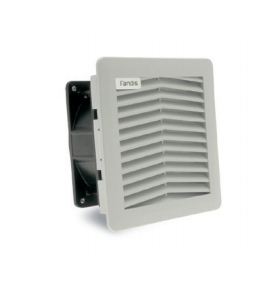


An integrated sealing of the gasket also provides secure dust and water protection
The GF fan filter range is characterized by an innovative mounting system with jacks, which accommodate both plastic and plate enclosures with thick-wall applications.





This series has the advantage of a fast outer installation, without extra drilling, and an easy filter replacement through the original hinged protection guard.

Roof exhaust units are commonly used in restricted spaces to dissipate hot air that is extracted from the top of enclosures. These units can be provided with an exhaust filter for either convection cooling or forced air-cooling in combination with a fan.
Axial fans and blowers provide forced-air cooling solutions to temperature-sensitive applications. The large airflow and low noise axial fans are designed for ventilation and spot cooling of internal machinery components, especially in areas with confined spaces. Blowers, on the other hand, produce more concentrated airflow and are suitable to work with high impedance systems. A variety of AC, DC, and energy-efficiency EC fans in different sizes, air volumes, and pressures satisfies each industrial requirement.
Axial fans are named for the direction of the airflow they create. Blades rotating around an axis draw air in parallel to that axis and force air out in the same direction.


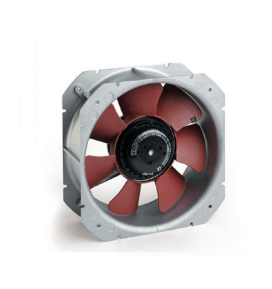

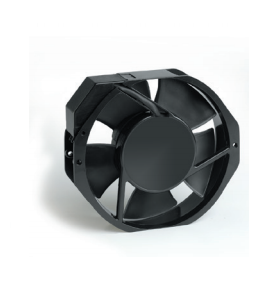



Axial fans create airflow with a high flow rate, meaning they create a large volume of airflow.
DC axial fans, DC brushless motor technology delivers lasting performance at a lower cost of operation.
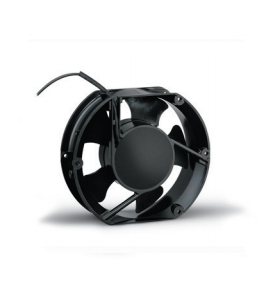

DC axial fans are widely used across industries for cooling electrical machines and equipment.
A DC centrifugal fan is a mechanical device with rotating impellers from which it draws kinetic energy to push out the air in a particular direction. It has a housing or an enclosure that helps maintain the direction of the outgoing air or gas.
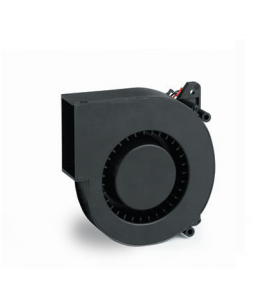
Heaters are used for warming up the air inside enclosures, protecting electrical and electronic components from condensation and corrosion. Fandis heaters have a self-regulating function that is designed to maintain optimal temperatures within enclosures.
Heaters are equipped with screwless terminals for a fast connection.
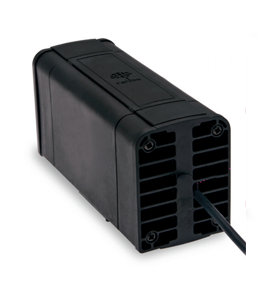



This clamping solution allows you to reduce wiring time and assures an optimum connection over the entire service life.
Heaters with built-in fans provide forced air circulation to guarantee an even heat distribution in enclosures, thus minimizing the risk of condensation.
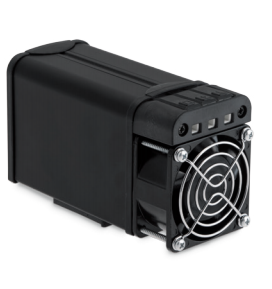


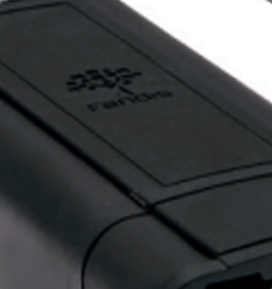
The range of RAC anti-condensation heaters is designed with built-in temperature limiting PTC devices that prevent over-heating. This series protects cabinet components from the harmful effects of condensation and corrosion, keeping internal temperatures within acceptable operational limits. RAC heaters feature cable or terminal block connections and heating power from 15 to 150W.
Flat spiral configurations can be used in high-tech manufacturing while a star wound cable can be used for air and gas heating.



terminal blocks are available in our range of accessories and are mainly used for infrared heaters.



A thermoelectric unit is a solid-state device, which can operate as a heat pump to transfer heat utilizing the Peltier effect. These thermoelectric air conditioners represent a cost-effective solution for cooling electronic equipment housed in small enclosures to provide reliable performance without the use of CFCs.
Thermoelectric devices are semiconductor heat refrigeration units that use the Peltier effect to create a heat flux between the two surfaces of the module.





Designed for enclosure in industrial settings, the AC cooling unit fit an integrated AC power supply system on the outer cover, saving internal space and avoiding additional thermal load inside the unit.
Temperature and humidity regulators help to guarantee the optimal conditions inside the enclosure for trouble-free operations with electrical components. They are used for controlling fan filters, heaters, or for switching signal devices.
Thermoelectric devices are semiconductor heat refrigeration units that use the Peltier effect to create a heat flux between the two surfaces of the module.





Twin thermostats integrate two independently switchable devices within one compact unit, allowing the simultaneous control of heating and cooling equipment or signaling equipment.
When used with heaters or fan filters, hygrostats keep the relative humidity (RH) levels of enclosures below the dew point and prevent condensation from forming on electrical components.

Thermoelectric devices are semiconductor heat refrigeration units that use the Peltier effect to create a heat flux between the two surfaces of the module.

DC axial fans are widely used across industries for cooling electrical machines and equipment.

Limit switches are a practical solution for sensing applications in enclosures. They are mechanically activated to switch on the lamp or switch off live voltage inside the cabinet.
When carrying out maintenance in electrical enclosures, good lighting is essential in order to ensure optimal inspection and control conditions. Fandis conventional fluorescent lamps and LED lights are specifically designed to maximize performance, brightness, and energy saving.
The fluorescent lamps with built-in electronic ballasts are compact and flicker-free, making them suitable for enclosure application where a high level of brightness is critical for inspection.



Fandis LED lamps are a durable and energy-efficient solution for enclosure lighting. They offer longer service life and lower maintenance costs than fluorescent systems.

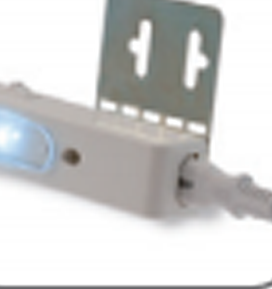





Signal towers are important optical and acoustic accessories for protecting the working environment and ensuring the efficiency of automated processes. These indicators provide alerts on anomalous situations and with regard to the machine’s operating conditions.





Raptors Trading & Contracting has been established in February 2015 and it currently represents multiple reputable international brands. Our traditional business model is based on trading and contracting in the electrical engineering sector.
Quick Links
Contact Us
© Copyright 2024 Raptors Qatar. Proudly Powered by oxi-smart.net
WhatsApp us